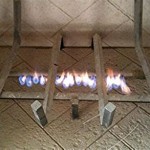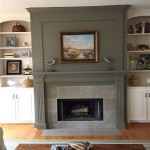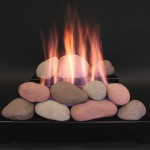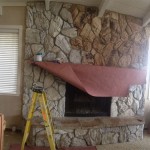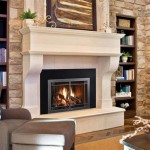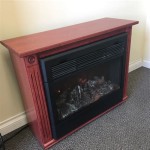Zero Clearance Outdoor Wood Burning Fireplaces: A Comprehensive Guide
Zero clearance outdoor wood burning fireplaces offer a blend of rustic charm and modern engineering, providing an efficient and aesthetically pleasing heating and gathering space for outdoor living areas. The term "zero clearance" refers to the fireplace's ability to be installed directly against combustible materials without requiring extensive masonry work or significant safety clearances. This feature significantly simplifies installation and broadens the range of design possibilities for outdoor spaces.
Unlike traditional masonry fireplaces, which require a deep foundation and substantial fireproofing, zero clearance models are factory-built and rigorously tested to ensure safe operation. They incorporate insulation and air circulation systems that minimize heat transfer to surrounding structures. These features make them a convenient and often more cost-effective alternative to building a traditional fireplace from scratch.
The selection of a zero clearance outdoor wood burning fireplace involves careful consideration of factors such as size, style, fuel efficiency, and local regulations. Understanding the nuances of these factors is crucial for making an informed decision that aligns with individual needs and preferences.
Understanding Zero Clearance Technology
The core principle behind zero clearance technology is effective heat management. These fireplaces are designed with a multi-layered construction that includes an inner firebox, insulation, and an outer casing. The insulation, typically made of high-temperature ceramic fiber or mineral wool, minimizes the conduction of heat outwards. An air circulation system further enhances safety by drawing cool air from the bottom, circulating it around the firebox, and exhausting heated air at the top. This process keeps the outer surfaces of the fireplace cool enough to allow installation directly against combustible materials such as wood framing, siding, and decking without posing a fire hazard.
Furthermore, zero clearance fireplaces are subjected to stringent testing and certification standards, typically by organizations like UL (Underwriters Laboratories) or CSA (Canadian Standards Association). These tests simulate worst-case scenarios, ensuring that the fireplace can withstand prolonged high-temperature operation without causing damage to surrounding structures. The certification label is a crucial indicator of safety and compliance with building codes.
The design of the firebox itself also plays a critical role in heat management. Many zero clearance fireplaces feature refractory brick lining, which helps to radiate heat into the surrounding space while protecting the steel firebox from direct flame impingement. The shape and design of the firebox can also influence the efficiency of combustion and the overall heat output.
Factors to Consider When Choosing a Zero Clearance Fireplace
Selecting the right zero clearance outdoor wood burning fireplace requires a thorough assessment of individual needs and the specific characteristics of the outdoor space. Several key factors warrant careful consideration:
*Size and Heat Output:
The size of the fireplace should be proportionate to the size of the outdoor area it is intended to heat. A fireplace that is too small will not provide sufficient warmth, while one that is too large may create an uncomfortable environment. Heat output is typically measured in BTUs (British Thermal Units). Estimate the heating needs based on the square footage of the outdoor space and the average temperature during the intended usage season. *Style and Design:
Zero clearance fireplaces are available in a wide range of styles, from traditional to contemporary. Consider the overall aesthetic of the outdoor space and choose a fireplace that complements the existing design elements. Options include models with brick facing, stone veneer, or sleek metal finishes. The design should also consider the ease of use and maintenance. *Fuel Efficiency and Emissions:
Wood burning fireplaces are not known for their fuel efficiency compared to gas or propane models. However, certain zero clearance fireplaces incorporate features that improve combustion efficiency and reduce emissions. Look for models with EPA (Environmental Protection Agency) certification, which indicates compliance with emission standards. Proper installation and regular maintenance are also critical for maximizing efficiency and minimizing environmental impact. *Installation Requirements:
While zero clearance fireplaces are easier to install than traditional masonry fireplaces, proper installation is still essential for safety and optimal performance. Follow the manufacturer's instructions carefully and ensure that all local building codes are adhered to. This may involve obtaining permits and inspections. Consider factors such as chimney height, flue size, and clearance from overhead obstructions. *Cost:
The cost of a zero clearance outdoor wood burning fireplace can vary significantly depending on the size, style, features, and brand. Factor in not only the initial purchase price but also the cost of installation, chimney components, and ongoing maintenance. Obtain quotes from multiple installers to ensure a competitive price.Installation and Safety Guidelines
Proper installation is paramount for the safe and efficient operation of a zero clearance outdoor wood burning fireplace. It is highly recommended to hire a qualified professional installer who is familiar with local building codes and regulations.
Prior to installation, thoroughly review the manufacturer's instructions and ensure that the site meets all requirements. This includes verifying that the foundation is level and stable and that there is adequate clearance from combustible materials, even though the fireplace is designed for zero clearance. The chimney system must be installed correctly to ensure proper draft and prevent the buildup of creosote, a flammable byproduct of wood combustion.
The following safety guidelines should be followed when using a zero clearance outdoor wood burning fireplace:
*Burn only seasoned firewood:
Seasoned firewood has a moisture content of less than 20% and burns more cleanly and efficiently than green wood. Avoid burning treated lumber, plastics, or other materials that can release toxic fumes. *Never leave the fireplace unattended:
Keep a close watch on the fire and ensure that it is properly extinguished before leaving the area. *Use a fireplace screen:
A fireplace screen prevents sparks and embers from escaping and causing a fire. *Clean the chimney regularly:
Creosote buildup in the chimney can pose a serious fire hazard. Have the chimney inspected and cleaned annually by a qualified professional. *Install carbon monoxide detectors:
Carbon monoxide is a colorless, odorless gas that can be produced by incomplete combustion. Install carbon monoxide detectors in the vicinity of the fireplace to provide an early warning of dangerous levels.Regular maintenance is essential for prolonging the life of the fireplace and ensuring safe operation. This includes inspecting the firebox, chimney, and other components for signs of damage or wear. Replace any worn or damaged parts promptly. Periodically clean the fireplace to remove ash and soot. By following these guidelines, users can enjoy the warmth and ambiance of a zero clearance outdoor wood burning fireplace safely and responsibly.
Furthermore, consider the environmental impact of burning wood. While wood is a renewable resource, burning it releases particulate matter and other pollutants into the atmosphere. Choose sustainable firewood sources and operate the fireplace efficiently to minimize emissions. Some communities may have restrictions on wood burning during periods of air pollution. Check local regulations before using the fireplace.
The selection and installation of a zero clearance outdoor wood burning fireplace represent a significant investment in outdoor living. By carefully considering the factors outlined above and adhering to safety guidelines, homeowners can create a cozy and inviting outdoor space that can be enjoyed for years to come.
In addition to the fundamental considerations, aesthetic enhancements can personalize the fireplace and integrate it seamlessly into the outdoor environment. Options include custom mantels, decorative firebacks, and integrated lighting. These features can elevate the fireplace from a functional heating source to a focal point of the outdoor space.
The long-term benefits of a well-chosen and properly installed zero clearance outdoor wood burning fireplace extend beyond mere aesthetics and warmth. It can enhance the value of the property, create a focal point for social gatherings, and provide a relaxing and enjoyable outdoor experience. The key to maximizing these benefits lies in careful planning, meticulous installation, and diligent maintenance.

Heatilator Castlewood Wood Zero Clearance Outdoor Fireplace Fergus

Heatilator Castlewood Wood Zero Clearance Outdoor Fireplace Fergus

Osburn Stratford Ii High Efficiency Wood Fireplace Woodland Direct

Osburn Everest 2 Zero Clearance Wood Stove Fireplace Fireplaces By Cameron

Kingsman Outdoor Zero Clearance Fireplace Ofp42 42

Rsf Pearl Woodburning Zero Clearance Fireplace Fergus

Kingsman Outdoor Zero Clearance Fireplace Ofp42 42

Heatilator Castlewood Wood Zero Clearance Outdoor Fireplace Fergus

Zero Clearance Vs Prefabricated Fireplace Full Service Chimney

Zero Clearance Fireplaces By Cameron


